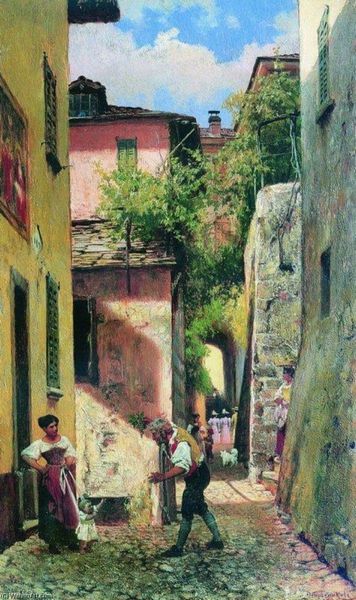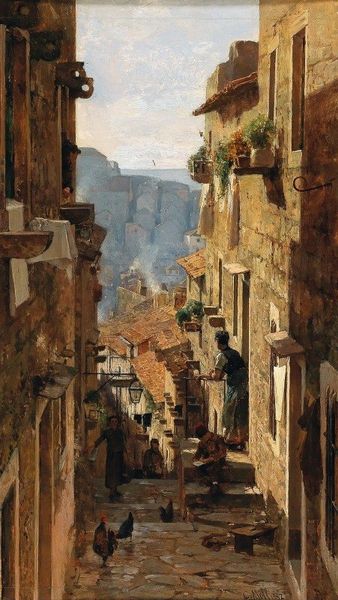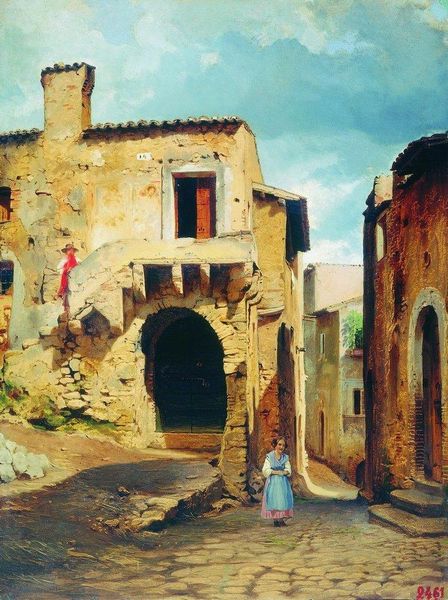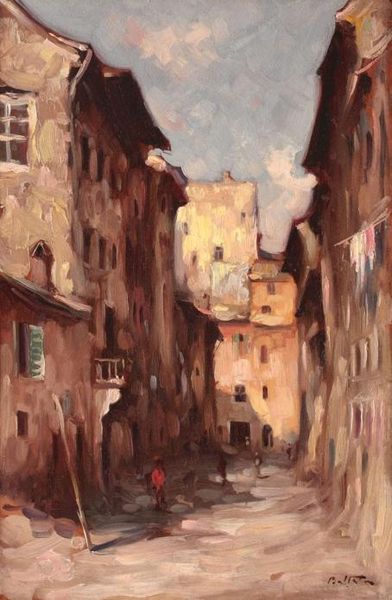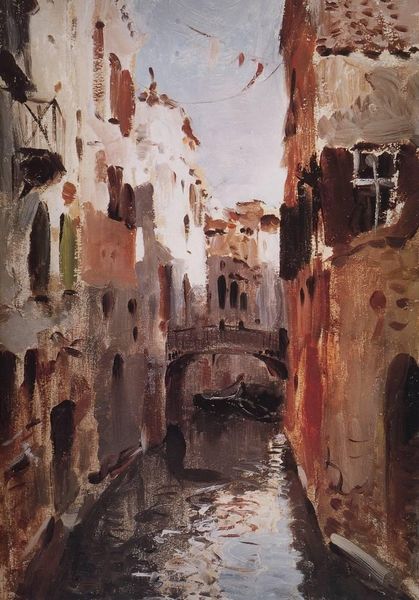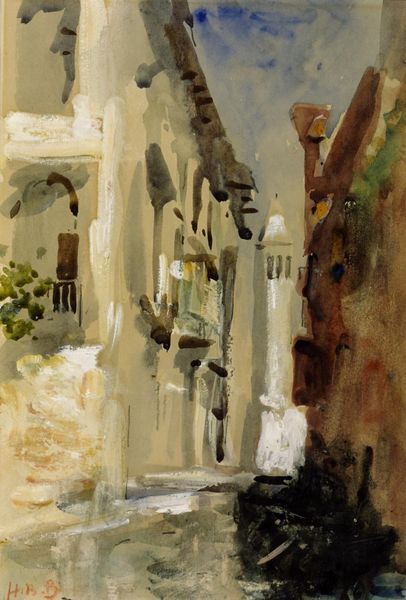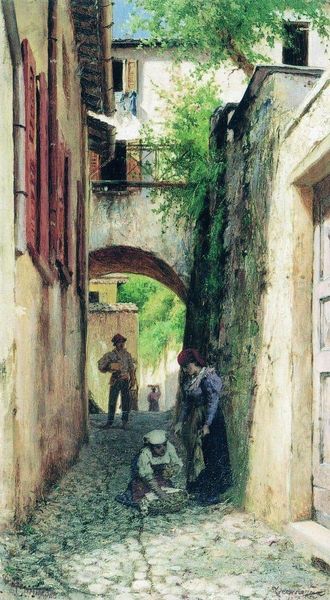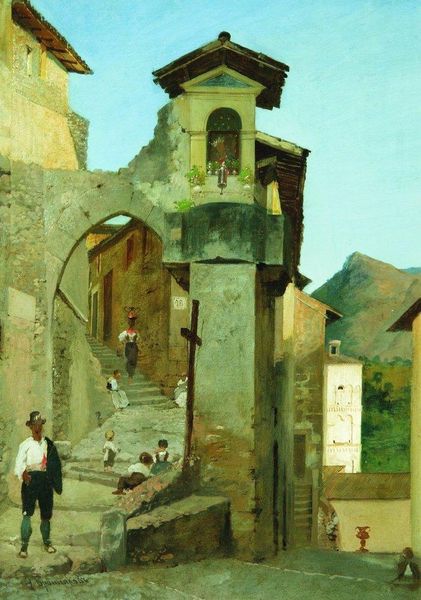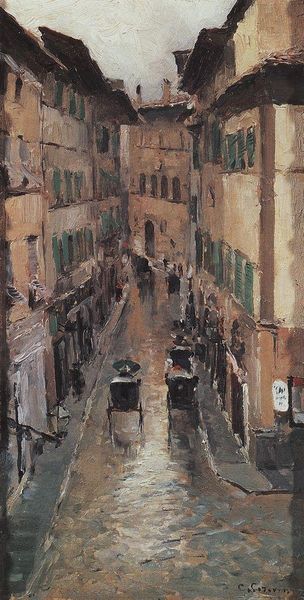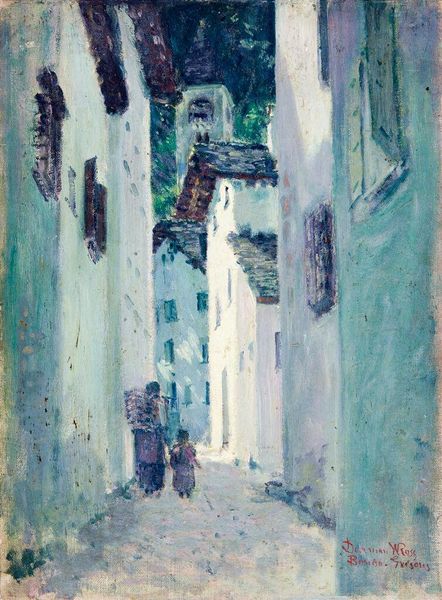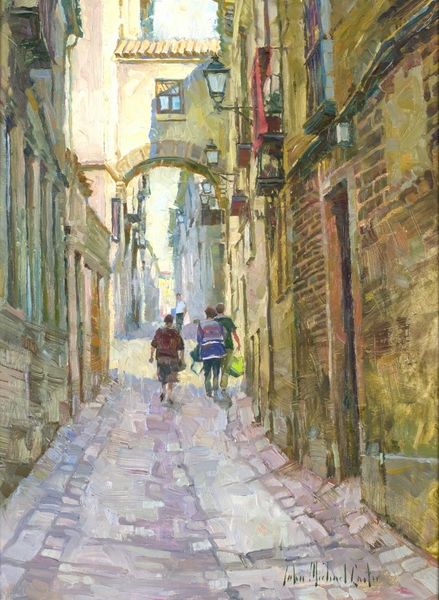
painting, oil-paint
#
painting
#
oil-paint
#
landscape
#
figuration
#
group-portraits
#
painting painterly
#
cityscape
#
genre-painting
#
italian-renaissance
#
realism
Copyright: Public domain
Curator: Welcome. We're looking at Fyodor Bronnikov's painting, "Bellagio," created in 1875 using oil paints. Editor: The first thing that strikes me is the light, filtering down this narrow street. It’s almost a spotlight on the figures gathered at the end, so familial, very Italian I would venture. Curator: Bronnikov situates us within a specifically European historical context here. We can discuss how this particular cityscape lends itself to an understanding of 19th-century notions of Italian culture, particularly as a site of both historical depth and contemporary social life. The buildings have stories etched in every stone, yet life continues within and around them. Editor: You're so right, and you said "etched"—it literally looks like time has been painting away on the stones. Tell me more about why this artist was drawn to genre painting. The scale is interesting too, so intimate for something grand, no? Curator: Bronnikov, associated with realism, engages in a form of visual storytelling, inviting us to consider how the genre of the cityscape can serve as a canvas for broader narratives around community, class, and daily life, right? Notice how these figures add to an ongoing theater of living… This, for me, provides a lens to see class dynamics as an extension of power relations across Europe at that time, but I am curious to know your thoughts on the Renaissance influences in this work, that are quite obvious as well. Editor: Good call—that framing feels almost like an old master looking out at us. I think for me, there's a tenderness in the work. In regards to an influence, this "window" to me reminds me of the compositions in frescoes as well! The colors are so vivid, almost hopeful against the stones—I imagine they chose Bellagio deliberately. Curator: Hope, yes. It’s this potential for the contemporary—present in that wash of light at the street's end—that feels deeply resonant still. I suppose that’s why, a century later, “Bellagio” manages to still stir. Editor: Right you are, there. I hope a viewer allows themself the opportunity to reflect on those subtle dynamics of power when encountering a piece of artwork like this one.
Comments
No comments
Be the first to comment and join the conversation on the ultimate creative platform.
